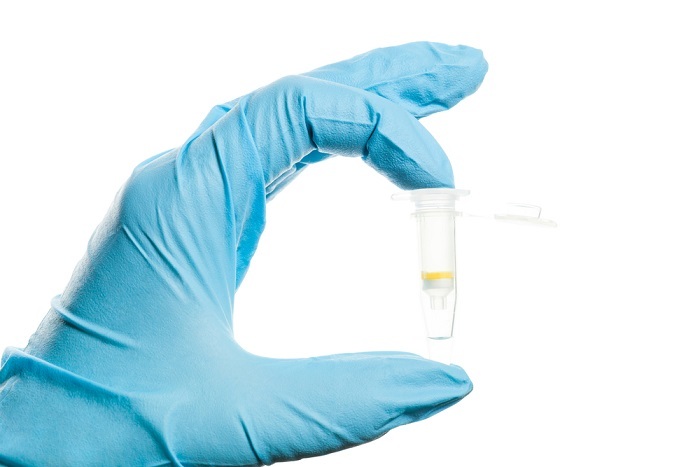
 Data Structure
Data Structure Networking
Networking RDBMS
RDBMS Operating System
Operating System Java
Java MS Excel
MS Excel iOS
iOS HTML
HTML CSS
CSS Android
Android Python
Python C Programming
C Programming C++
C++ C#
C# MongoDB
MongoDB MySQL
MySQL Javascript
Javascript PHP
PHP
- Selected Reading
- UPSC IAS Exams Notes
- Developer's Best Practices
- Questions and Answers
- Effective Resume Writing
- HR Interview Questions
- Computer Glossary
- Who is Who
What is DNA Extraction?
Introduction
DNA isolation is a technique of extraction of DNA either by physical or chemical method from a given sample of organism. Only isolation is not enough the extracted DNA should be of good quality too.
Generally, DNA can be extracted from a wide variety of samples like from prokaryotes which include bacteria, and from eukaryotic organisms, example from human samples like frozen tissues, blood, body fluids like semen, formalin fixed paraffin embedded tissues, aspirates like ovum, etc. Can be used for extraction of DNA.
Principle Involved in the Extraction of DNA
DNA was first extracted by Friedrich Miescher in 1869. The principle involved in the isolation and extraction of DNA is the breakdown of the cell wall followed by cell membrane and nuclear membrane that leads to the release of the intact DNA in the solution. This DNA is then precipitated and purified by the removal of the cellular debris like remains of cell organelles, proteins, lipids and other macromolecules.
Steps Involved
The method involves the lysis of the bacterial cell with subsequent solubilization of DNA.
This step is followed by removal of macromolecules like proteins, lipids or RNA by chemical or enzymatic method.
The first step in the isolation of DNA is the organic chemical treatment of bacterial cells, which causes the rupturing of the cell to release DNA which is impure.
Organic Chemical Extraction of DNA
The bacterial cell is treated with an organic detergent like SDS (sodium dodecyl sulphate) or EDTA (ethylene diamine tetra acetic acid), these chemicals cause the rupturing of the cell membrane and release of crude DNA.
Along with the DNA the remnants of the cells are also obtained which are subsequently removed by centrifugation.

The crude DNA contains proteins attached to it, which are denatured and precipitated by using a mixture of chloroform and phenol in the ratio of 25:24.
Again, the denatured protein is separated from the DNA by centrifugation. DNA thus obtained does not contain any protein but contains a minute quantity of RNA, which is then removed by treatment with RNase enzyme.
After the enzyme treatment DNA is concentrated and precipitated using ice cold phenol.
Precipitate obtained can be separated by centrifugation, then separated DNA precipitate is dissolved in double distilled water and assessed using gel electrophoresis or spectrometry.
DNA Assessment Using Gel Electrophoresis
Principle of Gel Electrophoresis- This technique is based on the principle that speed of the DNA molecule in the pores of the gel when current is applied depends on the size of the DNA and RNA molecule.
Larger the molecule slower is the speed of the molecules. DNA and RNA molecules are negatively charged so they will be attracted towards the positive terminal of the gel.
Types of Extraction Methods
There are basically three methods for the extraction of DNA. They are ?
Physical Method
Chemical Method
Enzymatic Method
Physical Method
To extract DNA from a relatively tougher tissues are done using physical method in which first cells are frozen using liquid nitrogen ad are then ground in mortar and pestle. After the grinding process they are subjected to chemical or enzymatic treatment. Other physical methods include automated grinders, sonication and using metallic or ceramic beads.
Chemical Method
This method is used for very soft and gentle tissues. Some organic chemicals like sodium dodecyl sulphate (SDS) and ethylene diamine tetra acetic acid are used. Some inorganic salts like guanidine salts or chaotropic agents like alkaline solutions are used.
Enzymatic Method
This method is used along with other method that is with physical and chemical methods enzymes like lipase, zymolyase, lysozyme, proteinase K are used to break down tough cell wall and tissues. Enzymes to be used depends on the starting material selected.
Applications of DNA Extraction
DNA extraction is used in the establishment of the paternity of the child. It can be used in cases when a child wants to know about the biological parents.
This technique is widely used in forensic to determine the criminal from the evidence like hair, body fluids, etc from the crime scene.
DNA extraction is used to establish ancestry between two closely related species or a new species and already known species.
It is widely used in genetic engineering to isolate the desired gene and incorporating it in other organisms to form recombinant organisms.
It has also been used in the diagnosis of some genetic diseases like Alzheimer's disease, sickle cell anemia, etc.
Through DNA extraction and genetic engineering several important hormones like insulin have been produced.
Limitations
There is always an increased risk of contamination during transferring from one tube to another.
Extraction process is time consuming and involves the use of some harmful detergents like SDS and phenol (it is corrosive in nature).
Some salts that are used during the process must be removed so that they do not interfere with the RFLP procedure due to alteration of DNA mobility.
Conclusion
DNA is a double stranded structure found in the nucleus of the cell. The process of extraction helps in the isolation of pure DNA expelling all the cellular debris. This process has found a wide range of application and more research work is going on to make it more cost effective and contamination free.

